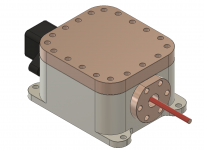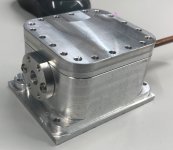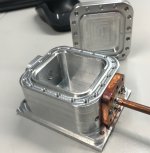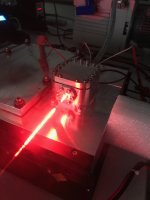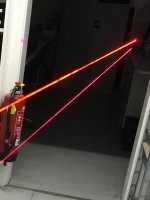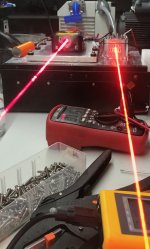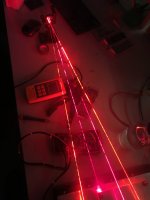Hello Guys!
I now have a better estimate.
If we talk low cost, i can offer:
730€ with the 638nm 185mW SM diode, this module should reach 618nm. This would only be the module, without any driver.
If we talk the best module, ready to use, fully fledged we are at 1020€ including driver and the better 633nm 100mW laser diode. It should reach 613nm.
The module will use around 70W at 24V (around 3A).
Please keeping mind, every diode is different, so i cannot guarantee the actual wavelength.
If you want to get an even lower wavelength, we could stack a tec underneath the complete module. I didnt calculate a price and the power usage would be enormous (like >300W) and you could get to around 610nm.
Drop me a PM or leave a comment if you are interested. If enough people are interested, we could get the price down.
I now have a better estimate.
If we talk low cost, i can offer:
730€ with the 638nm 185mW SM diode, this module should reach 618nm. This would only be the module, without any driver.
If we talk the best module, ready to use, fully fledged we are at 1020€ including driver and the better 633nm 100mW laser diode. It should reach 613nm.
The module will use around 70W at 24V (around 3A).
Please keeping mind, every diode is different, so i cannot guarantee the actual wavelength.
If you want to get an even lower wavelength, we could stack a tec underneath the complete module. I didnt calculate a price and the power usage would be enormous (like >300W) and you could get to around 610nm.
Drop me a PM or leave a comment if you are interested. If enough people are interested, we could get the price down.




